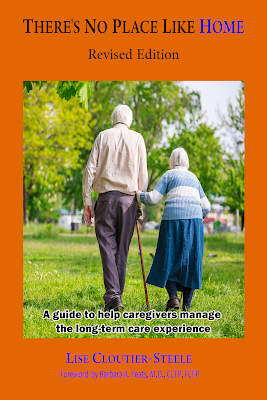
I am 71 years old, and like many seniors in my age group, I sometimes wonder what my exit from life will look like. Despite my daily efforts to eat well, exercise and maintain an active lifestyle, anything could happen. After all, illness does not discriminate.
I couldn’t help but think that this is how I hope things will work out for my husband and me, and there’s no reason why we couldn’t enjoy a similar happy outcome, one that would allow us to retain our independence and dignity right up to the end. But for that to happen, planning for any eventuality is key.
There have been times when I’ve told my husband that if he became ill, and couldn’t care for himself, a long-term care facility would be out of the question. I always add: “That would be over my dead body!”. Of course, that assumes I would be available and able to coordinate home care for him, and advocate on his behalf. If that were not the case, health care system authorities would likely have him committed to a care facility in no time.
If I became widowed, and could no longer care for myself, the same could happen to me. I know I would be devastated if I ended up in a facility where basic care and safety could not be guaranteed, as my late father was when he realized there would be no turning back to the life he once knew. It didn’t matter how many times I explained to him that Mom’s cancer left us with no other choice but institutionalized care for him. That just made him cry even more, and although his tears made me feel guilty and sad, I couldn’t blame him. Needless to say, knowing what I know now about long-term care, he had good reason to cry.
Case in point: a few months later in November 2023, the Ottawa Citizen reported that there had been 7,157 confirmed COVID-19 cases among residents and staff of Ontario long-term care facilities since late August 2023. Of those, 181 residents were hospitalized and 106 died. It was not a big surprise then, to learn from this report that as of November 14, 2023, there were 105 ongoing outbreaks in long-term care homes across the province. Since then, I have come across dozens more recent media reports of persistent issues with long-term care, which naturally lead to greater cause for concern and worries about the future.
The film should prompt all Canadian seniors to do what they can to push the political will to effect change in long-term care once and for all.
An important first step, as suggested by Ms. Miller in a recent television interview, would be to take the profit out of care.
No one wants to spend their later years in an institution, and so more than ever, seniors need a plan for their golden years that would allow them to age in place with dignity. It could include a variety of options such as a granny suite, co-habitation, provisions for in-home care if needed, or a retirement residence where assisted-living services are available.
My husband and I live in a senior community, where folks tend to look out for one another, and this bodes well for us to remain independent. Should one of us be left behind, neighbours would always provide a human connection. I guess this part of our plan to age in place has worked out well.
It’s the possibility of a non-optional long-term care outcome for either one of us that I continue to struggle with.
Yet, it’s not like I wouldn’t know what to do, having experienced caregiving for my father while he was in a long-term care facility for a period of over three years. I think I would know instinctively what would, or wouldn’t work, for myself or my husband.
In the meantime, home is home, where we plan to make the best of each day going forward for as long as we possibly can. If a health challenge becomes part of our life together, then we would face it with a strategy that has worked well for us up until now: common sense with a mix of love, kindness and compassion.

Photo of Lise Cloutier-Steele by Wayne Cuddington of the Ottawa Citizen



